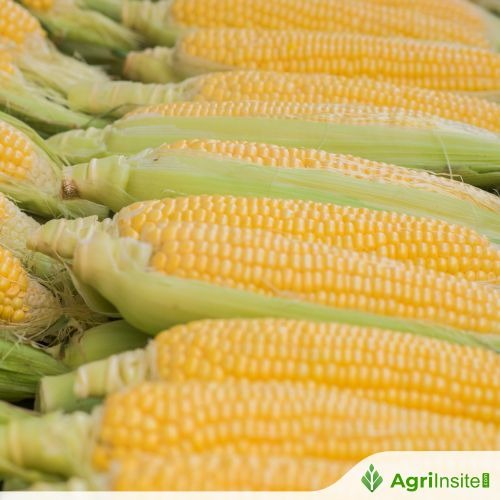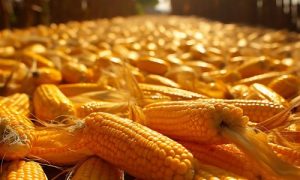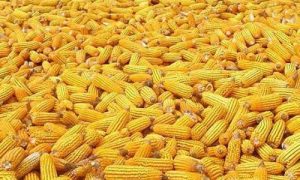Punjab: Kharif maize pilot project gets lukewarm response in 6 dists

Punjab’s scheme to promote kharif maize as an industrial crop met only 59% of its 12,000-hectare target, with 7,000 hectares sown across six districts. Despite subsidies, farmers prefer wheat-paddy due to assured procurement. Experts urge policy support, market assurance, and cluster farming to boost maize, conserve water, and diversify crops.
The state government’s maiden initiative to promote kharif maize as an industrial crop through a subsidy scheme received a lukewarm response from farmers, as the authorities achieved only 59% of the set target of 12,000 hectares (30,000 acres) across six districts.
According to the Punjab government’s initiative, aimed at encouraging crop diversification and conserving water, 12,000 hectares were to be targeted under the paddy-to-maize diversification plan in six districts: Bathinda, Sangrur, Pathankot, Gurdaspur, Jalandhar and Kapurthala. Farmers adopting maize cultivation were to receive a financial incentive of ₹17,500 per hectare. The government’s move aimed to achieve twin targets—farm diversification and boosting the cultivation of maize as a biofuel.
Found your dream destination? Lock in the lowest airfare now on SkyScanner Explore Now
The recommended time of sowing maize ended on July 15, and the state agriculture department is now undertaking a drive for physical verification of the fields to grant a subsidy of ₹7,000 per acre to farmers who made the switch. According to the provisional data provided by the agriculture department, kharif maize was sown on 7,000 hectares, or approximately 19,500 acres. As per the information, Pathankot recorded 4,100 acres, the highest provisional figure under the maize subsidy scheme for 2025-26, followed by Sangrur (3,700), Bathinda (3,200), Jalandhar (3,100), Kapurthala (2,800) and Gurdaspur (2,600).
Overall, the cultivation of the kharif maize remained unchanged from the last season at nearly 80,000 hectares or 1.98 lakh acres sown across the state.
The agriculture department officials said that it’s too early to dwell on the reasons for not meeting the target.
“Overall, it is a win-win situation for farmers. They will get a subsidy and maize is already in demand, while the government can achieve its crop diversification targets. We are still in the phase of collating field data and getting reports. Once the data is analysed, we can come up with the reasons and make necessary tweaks,” the agriculture department official said, pleading anonymity.
A Bathinda farmer, Baldev Singh, said that the assured purchase of non-basmati rice by the government agencies makes cultivators stick to the wheat-paddy cycle. “Crop diversification plan will become successful only if farmers are given assurance of purchase of their produce of kharif maize or any other crop. Owing to the increase in cost inputs and agrarian debt, farmers are not in a position to take risks,” he added.
Agriculture experts say there are 18 ethanol plants in the state, and maize is in huge demand for making renewable fuel, which is blended with petrol because of the recent push to blend as much as 20%.
Further, according to the Central Groundwater Board’s 2022 report, 117 of Punjab’s 150 revenue blocks are over-exploited, meaning groundwater extraction far exceeds natural recharge. Sangrur and Bathinda are among the districts witnessing intensive paddy cultivation where the water table is falling by over a metre a year, rendering shallow aquifers increasingly inaccessible. Besides the state government, the prominent sugar baron Rana Gurjeet Singh had also appealed to the farmers to start sowing maize and announced that he would buy the crop on MSP to meet his units’ demand for ethanol.
According to Tejpal Singh, the joint director of the state agriculture department and engaged in promoting maize, the decision to incentivise maize cultivation is aligned with the need to promote water-efficient crops and enhance farmers’ income.
“Maize is a versatile crop which requires less water in comparison to paddy. Under the state government’s scheme, a farmer will be given a subsidy of ₹7,000 per acre if he uses the land for maize, which was used for rice cultivation in the last kharif season. Our efforts have yielded results this season, and more efforts will be made on crop diversification from next year after analysing the kharif maize trend,” he added.
Bathinda chief agriculture officer Jagdish Singh said that the versatility of kharif maize in terms of its uses, from food to animal feed and starch content, offers a wider market and income potential for farmers.
“By diversifying the kharif crop of paddy with maize, farmers can improve soil health, reduce water consumption, and create a more resilient agricultural system,” he added.
Maize is sown in Punjab in two seasons-the water-intensive spring/summer season between February and June and the water-conservative kharif season of June to October.
Agriculture experts said that since summer maize is not endorsed and there is no official data on its acreage, but officials said summer maize was sown this year on more than 2 lakh hectares.
Director of the Indian Institute of Maize Research (IIMR), a central institute, Hanuman Sahay Jat, said that while rice growers cultivate water-guzzling varieties of summer/spring maize in a big way, they stay away from sowing kharif maize, the crop which requires fewer irrigation cycles.
Jat said the industrial set-ups of ethanol, poultry and cattle feed in Punjab have an annual demand of 40 lakh tonnes, whereas the state produces only 10 lakh tonnes.
“Punjab needs a dedicated policy to promote kharif maize, for which it has been advised to undertake mapping the areas suitable for the crop. Kharif maize is an ideal alternative to water-guzzling paddy, but the former could conserve groundwater only when it is sown in clusters with large tracts of fields,” he said.
To Read more about Maize News continue reading Agriinsite.com

















